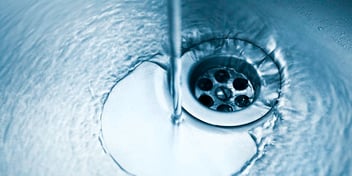Power and Water installs pre-treatment system to flush out wastewater pollutants
The Northern Territory’s largest wastewater treatment plant has opened a new facility to flush out everything but the ‘three ps’ – pee, poo and (toilet) paper – from its treatment process.
The $16.2 million inlet works at Power and Water Corporation’s Leanyer Sanderson waste stabilisation ponds will screen 15 million litres of wastewater per day from 50,000 houses, schools and businesses across Darwin’s northern suburbs.
This process is expected to remove 45 tonnes of bathroom products, such as wet wipes and sanitary items, and 50 tonnes of grit per year.
Power and Water Chief Executive Michael Thomson said it is difficult for the ponds’ natural treatment processes to break down these items.
“As raw sewage passes through the inlet works, it removes pollutants that should not be flushed down the toilet,” he said.
“These pollutants … are the major contributor to the development of surface scum and blockages in the treatment pond system.”
 Inlet works at Power and Water Corporation's Leanyer Sanderson waste stabilisation ponds.
Inlet works at Power and Water Corporation's Leanyer Sanderson waste stabilisation ponds.
Thomson said there had been a significant reduction in surface scum since the commissioning of the inlet works began in late November. This means less upkeep is required, which will allow the treatment plant to reduce its maintenance budget.
“Previously, every week our employees were manually removing surface scum caused by the accumulation of unwanted bathroom products that ended up at the facility,” he said.
Along with reducing surface scum, the inlet works also provide environmental benefits.
For example, by removing bathroom products and other rubbish from the wastewater treatment process, the sludge that accumulates in the ponds can be repurposed for composting or land rehabilitation, rather than being sent to landfill.
The pre-treatment process also helps with odour control by consolidating the most pungent elements of the system at a central location, where they can be better managed through extraction and biological treatment.
Local contractors carried out 90% of the work on the project, which took 18 months to complete.
For more on wastewater treatment, check out the AWA/ANZBP Biosolids conference in February. To learn more and to register, click here.

